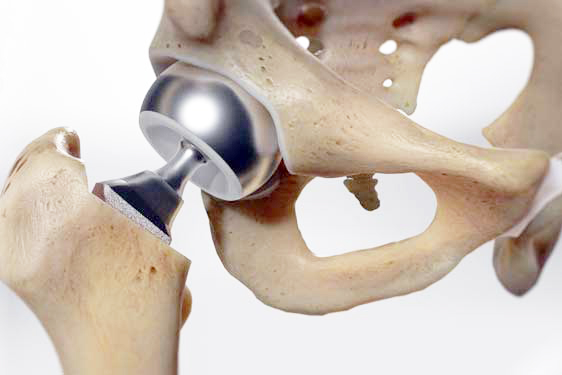Understanding Bipolar Hip Prosthesis: Specifications, Uses, and Recovery

Bipolar Hip Prosthesis
Hip replacement surgery is a common orthopedic procedure that aims to alleviate pain and restore mobility in individuals suffering from hip joint conditions, such as arthritis or fractures. One of the variations of hip prostheses used in this surgical intervention is the bipolar hip prosthesis. This article will provide a comprehensive overview of bipolar hip prosthesis, including its specifications, uses, sizes, differences from unipolar hip prosthesis, total hip arthroplasty, recovery time, and the materials used.
Bipolar Hip Prosthesis Specifications, Uses & Sizes:
Bipolar hip prostheses are specialized implants designed for hip joint replacement surgeries. The term "bipolar" refers to the two articulating surfaces within the implant. The inner bearing, or femoral head, is a smaller ball within a larger outer shell. This design allows for multidirectional movement, reducing friction and wear on the joint.
Specifications:
Uses:
Difference Between Bipolar and Unipolar Hip Prosthesis:
The main difference between bipolar and unipolar hip prostheses lies in the articulation design. While bipolar implants have two separate moving components, unipolar implants have a single articulating surface. Unipolar implants consist of a larger femoral head that moves within a fixed acetabular cup.
Advantages of Bipolar Hip Prosthesis:
Difference Between Bipolar and Total Hip Arthroplasty:
Bipolar hip arthroplasty and total hip arthroplasty (THA) are two distinct surgical procedures, each with its own indications and goals.
Bipolar Hip Arthroplasty:
Total Hip Arthroplasty (THA):
Recovery Time for Bipolar Hip Replacement:
The recovery time for bipolar hip replacement surgery varies among individuals and is influenced by factors such as age, overall health, and the extent of joint damage. Generally, patients can expect a gradual improvement in mobility and pain relief over several weeks to months.
Postoperative recovery stages may include:
Material Used for Bipolar Hip Replacement:
Bipolar hip prostheses are typically constructed from biocompatible materials that offer durability and stability.
Materials commonly used include:
Bipolar hip prostheses play a crucial role in addressing hip joint pathologies and improving the quality of life for patients. Understanding the specifications, uses, differences from unipolar hip prostheses and total hip arthroplasty, recovery expectations, and the materials involved is essential for both healthcare professionals and individuals considering or undergoing hip replacement surgery. Consultation with orthopedic specialists is crucial to determine the most suitable treatment plan based on individual needs and conditions.
Help us correct (or expand/improve) this article - Mail us your inputs at domore@alltraumaimplants.com
Related Articles
All About Cannulated Screws
Orthopedic Bone Plates: Types, Surgery, and FAQs
Understanding Osteosynthesis
Trauma Implants - A Comprehensive Guide
Titanium Orthopedic Implants: Revolutionizing Bone Surgery
Osteotomy of the Knee: Procedure, Recovery, and Considerations
Understanding Bipolar Hip Prosthesis
Proximal Femur Nail Antirotation (PFNA): Advancements in Femoral Fracture Fixation
You May Also Like
What is a Spinal Implant? Types, Usage and Options: A spinal implant is a device surgically placed into the spine to support and stabilize spinal bones, or to relieve nerve compression. They can be made of metal, plastic, or other materials and can include spinal fusion ... Read More
What are the types of orthopedic implants?: An orthopedic implant can be defined as a device which is manufactured to replace a joint, bone, or cartilage due to damage or deformity. You can distinguish the orthopedic implants by their type of material and the type of tissue it will replace ... Read More
Hip Prosthesis, Types of Hip Prostheses & Top Manufacturers: A hip prosthesis is a device that replaces a damaged hip joint. The hip consists of a convex femoral head inserted into a concave acetabulum within the pelvis, cushioned by articular cartilage within a synovial joint capsule. A hip prosthesis ... Read More
What are trauma implants? Materials used to make these implants: Mostly available in pure titanium (or titanium alloys such as Ti-6AI-4V or Ti-6AL-7Nb) and stainless steel, trauma implants are used in fixation of bone fractures. These implants may be further processed with ... Read More
Zimmer Biomet Names CEO of Dental/Spine Spin-Off: Zimmer Biomet Holdings, Inc. (NYSE and SIX: ZBH), a global leader in musculoskeletal healthcare, today announced that after an extensive search, Vafa Jamali has been appointed as CEO of "NewCo", the independent, publicly traded company that will be created by ... Read More
Bactiguard-coated Zimmer Biomet trauma implants receive European regulatory clearance: "I am very pleased that the CE mark has been secured for Bactiguard-coated Zimmer Biomet trauma implants. This clearance will pave the way for European market launch in 2021. At the same time, we are preparing for the submission of the U.S regulatory file ... Read More
A new non-surgical treatment to lessen patient’s pain and get them back to their active lifestyles: Miller Orthopedic Specialists introduces MOS Regenerative Medicine Solutions, a non-surgical treatment that uses a patient’s own stem cells to promote healing within. MOS Regenerative Medicine Solutions has multiple types of treatments that... Read More
Driving Orthopaedic Procedure Costs Down: OIC Launches One Procedure, One Price(TM) Initiative: In orthopaedic procedures, commoditized implants are typically the most significant expense. Medical devices companies have put exorbitant price tags on implants and tools differentiated by sales and marketing expenses, not innovative technology... Read More
Syntellix Lauded by Frost & Sullivan for its Bioresorbable Orthopedic Implant: The innovation reduces surgical complications and time in the OR without any major changes to standard procedures - all while decreasing healthcare costs. The MAGNEZIX implant's unique capability of converting metal to bone makes it an ideal implant of the future ... Read More
Trauma Implants Market to Reach 10.14 Billion by 2026: The global Trauma Implants Market size is expected to reach USD 10.14 billion by 2026, exhibiting a CAGR of 4.3% during the forecast period. The increasing prevalence of sports injuries among children and teenagers will contribute significantly to the Trauma Implants Market share in the forthcoming years... Read More
